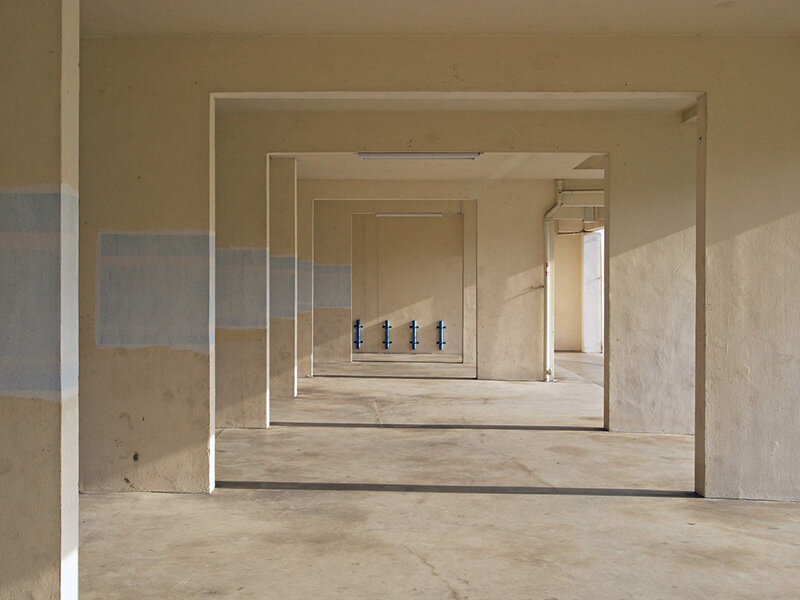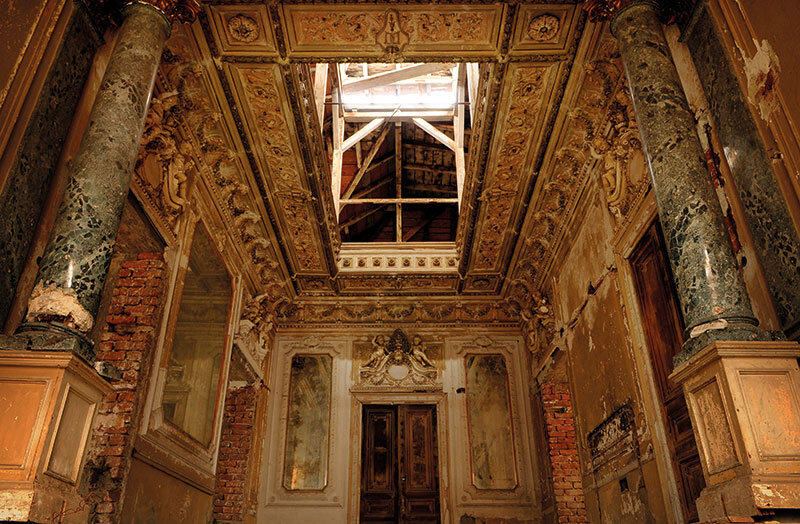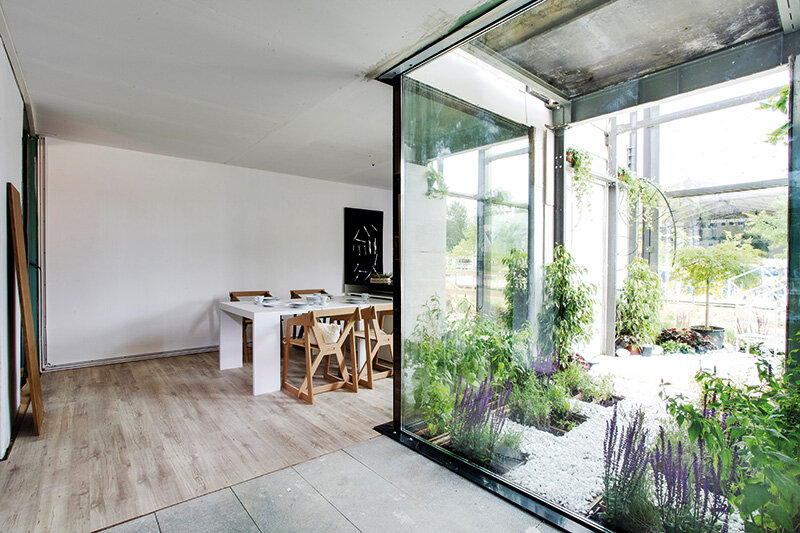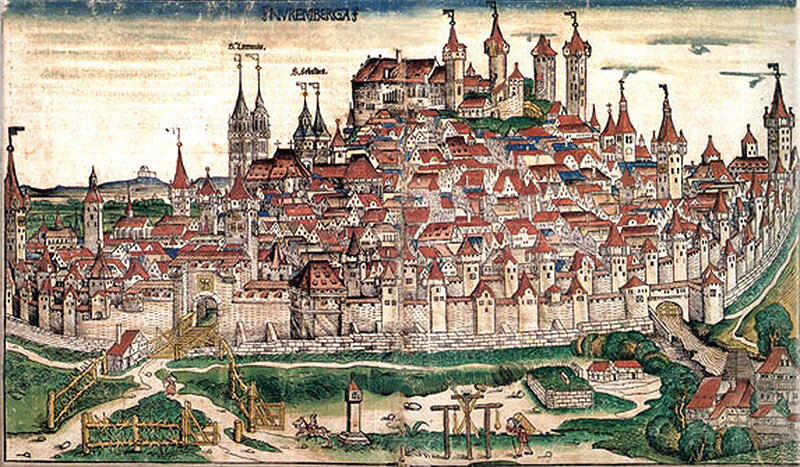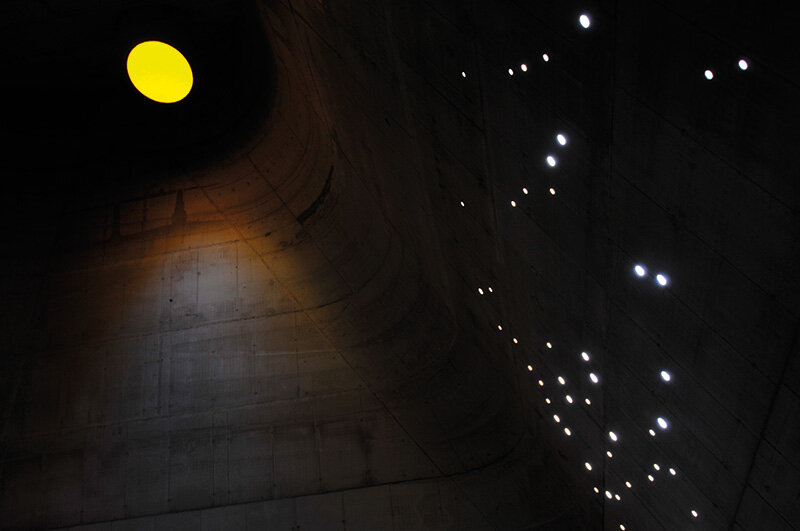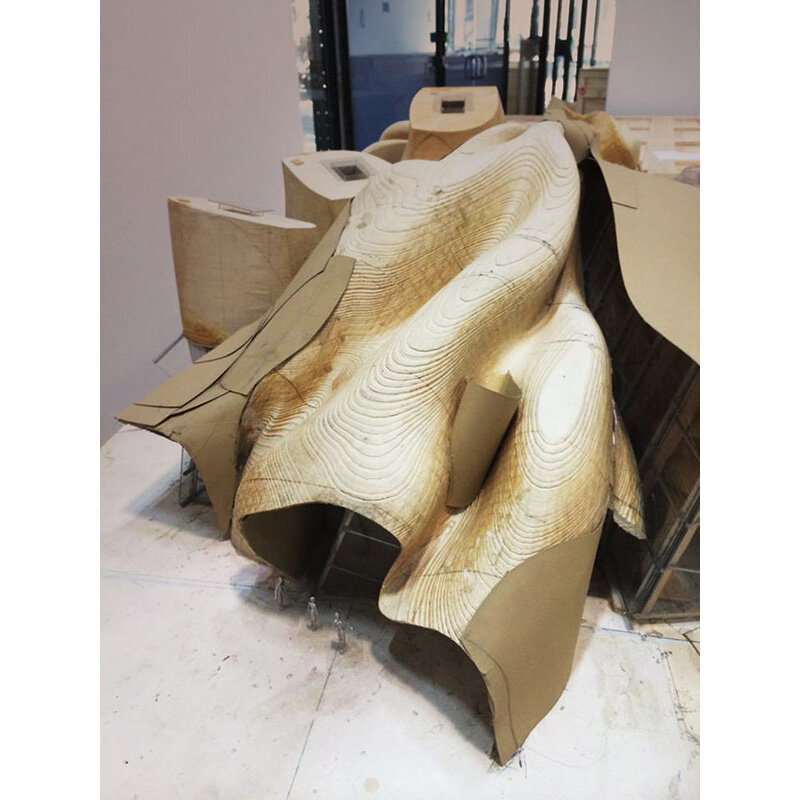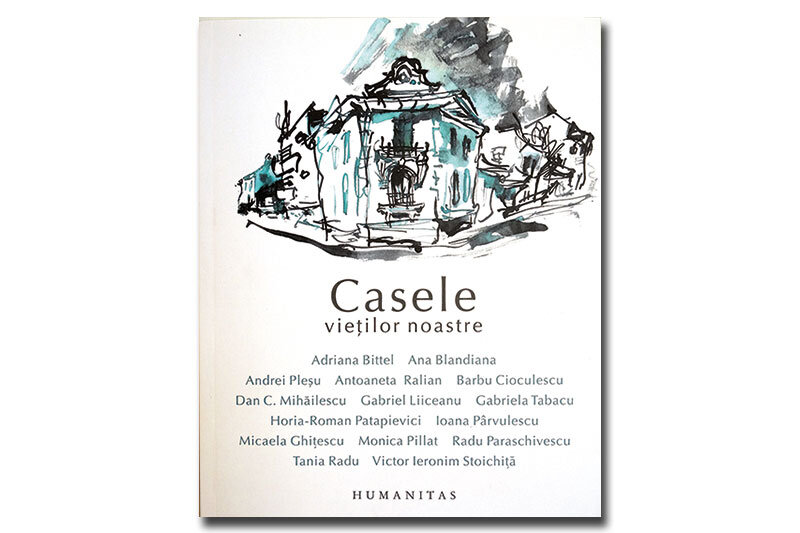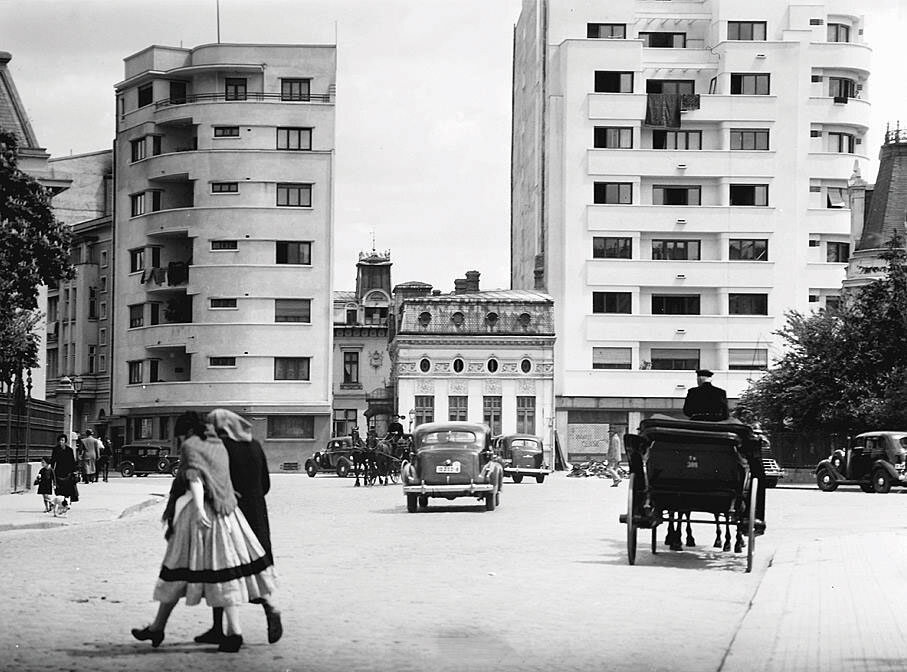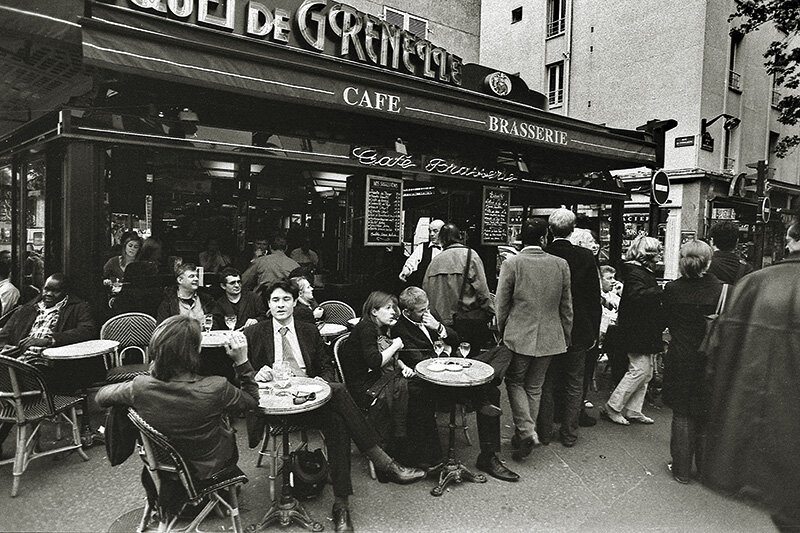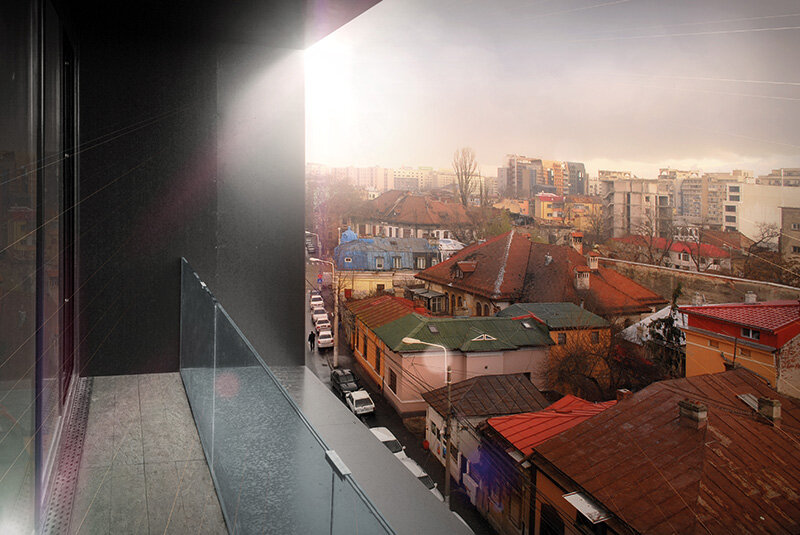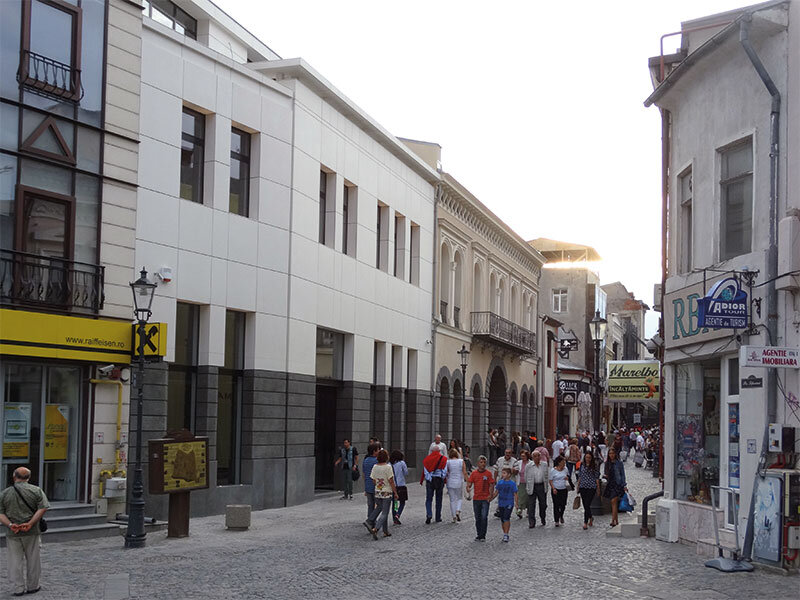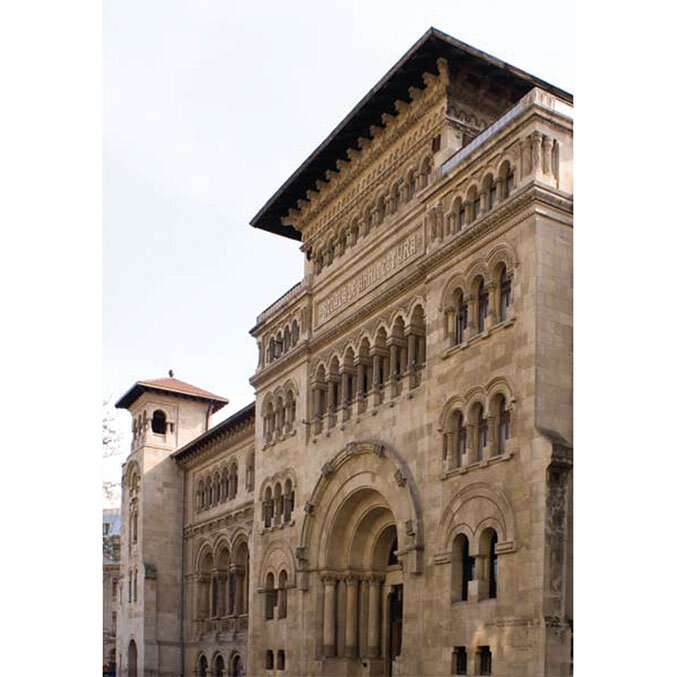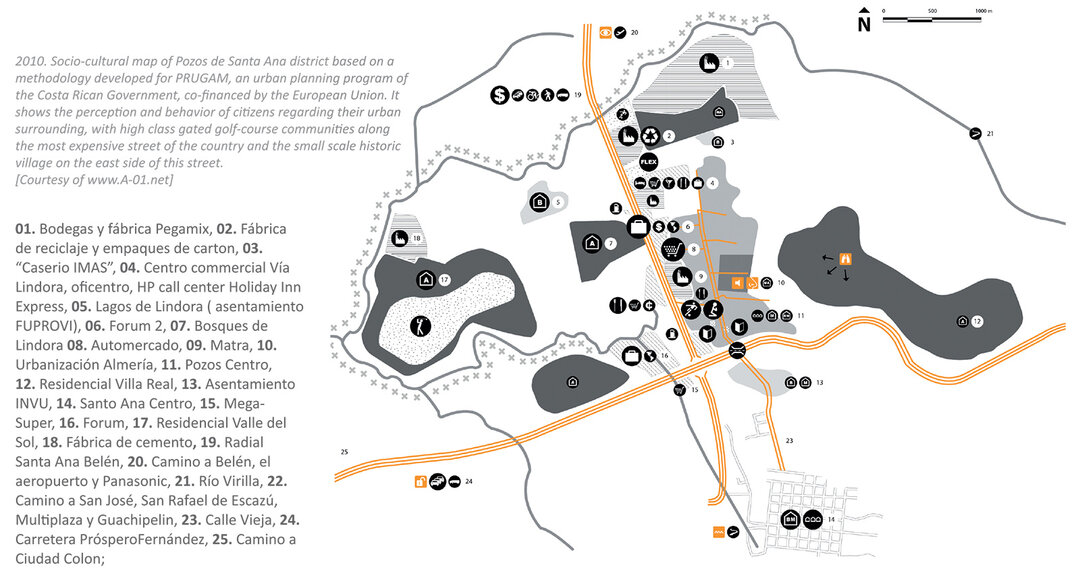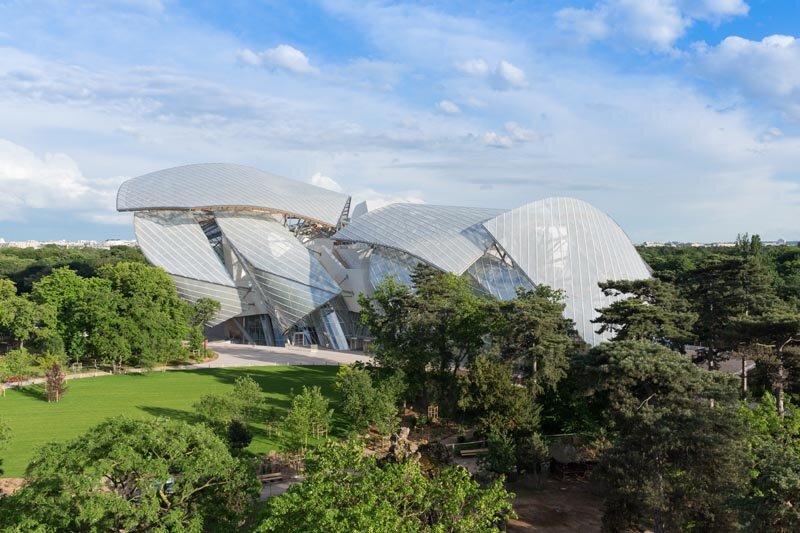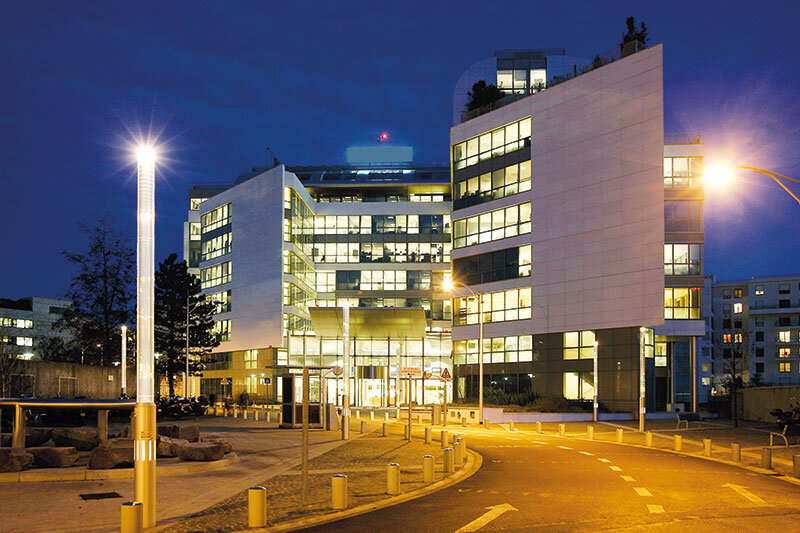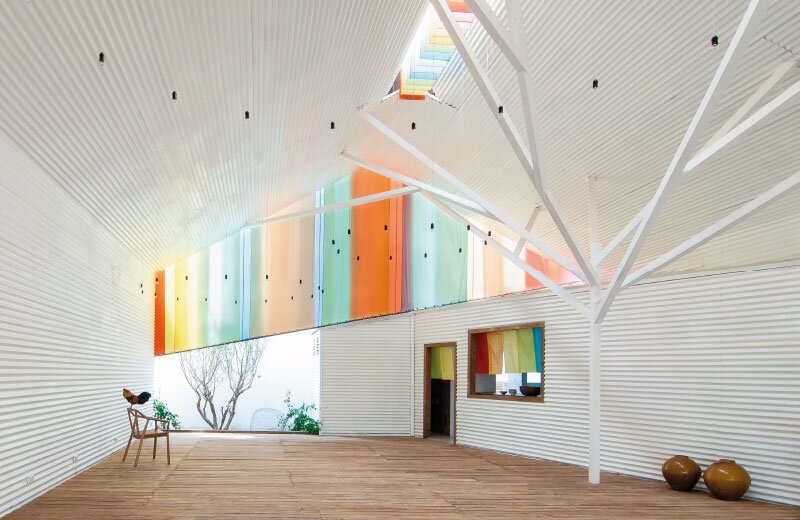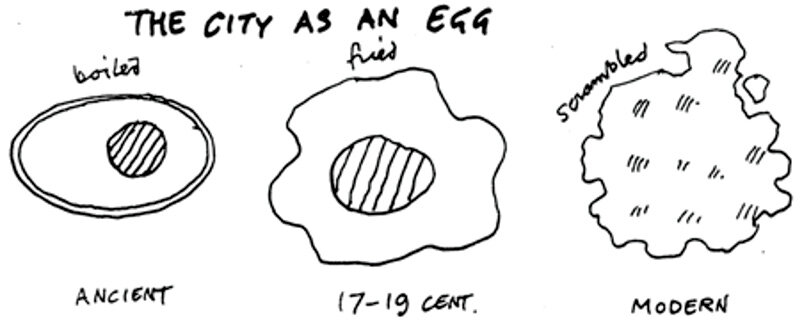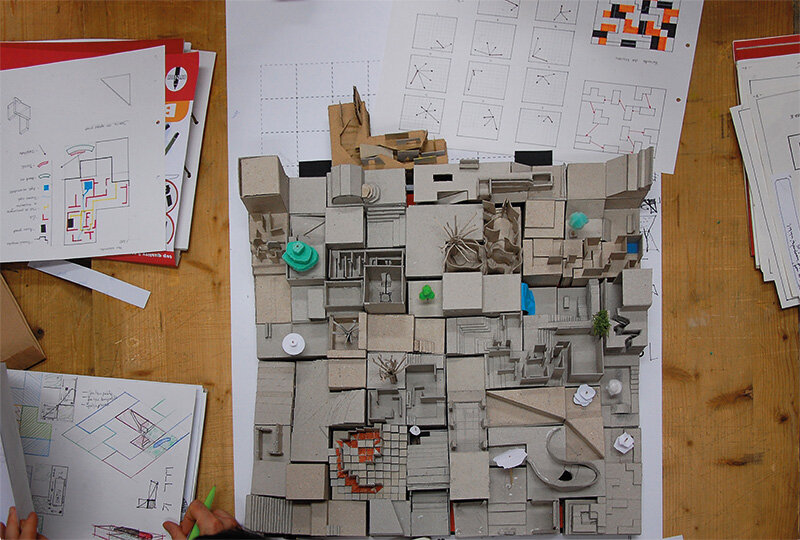
Blur-Urbanism
| Within interwar modern architectural thought, the immanence of materialistic spatial projections and neighborhoods often functioned, in the imagination and in the realm of practice, as a single continuum, as an invisible social medium or as a quiet, absorbing void. Together with the ascetic design of Mies van der Rohe's visionary ultraminimalism, these tendencies towards a universal modernist spatial logic, which had taken shape in the language of ultra-thin surfaces and abstract modern materials, can be seen as an extension of abstraction into negation, negation made visible in the optical continuum of the emptied spaces1. This singular epochal modernity, coupled with the parallel myth of transparency, has almost achieved the goal of the purely rational distribution of events within a homogeneously transparent spatial field. And yet, at the very core of this absolute abstraction found in all modernist practices, the search for material causes and formal causes always seems to come up against a certain resistance, an irreducible otherness, balancing itself in the subtle reality of construction. This stubborn resistance, this presence of the latencies and valences of imperfection, which includes the maculated register of patterns of use, is rendered to the senses within the post-representational experience of everyday life, especially when in close proximity to architectural facts, a legibility that marks the possible even in the ultra-minimalism of extreme works. Since 1968, the collective fantasy or belief in the freedom of modern space that underpins the common aspiration toward a transparent, singular continuum of modern inhabitation has been contested by theorists inside and outside the architectural sphere - as a matter of freedom. Beyond the situationist response, Henri Lefebvre's particular urban investigations of Henri Lefebvre's construction and production of spaces-spaces create a situation in which the singular spatial fantasy turns to diversified 'pools' of malleable (and potentially transformative) spatial experiences and spatialsituations2. Significantly, Lefebvre's critique of this modern spatial logic necessarily utilized a more subtle dialectic to expose minimal spatial difference (specifically, the imperative distinction between conceived space, perceived space, and lived space), and it is precisely in the immanence of minimal difference that the otherness of this rational rhetorical process of spatial extension emerges. It is through Lefebvre's writings that we are able to determine how these minimal differences appear within an apparently singular transparent plenum. The conceived space is a channel of trust, a visceral destination, distancing - all within the same performative codes of modernism. The experience of the senses, the ability to see through deliberately invisible space, and the recollection of these phenomena (in conversation or in dreams) can lead to a new spatial continuum, but not a vacuous and minimalist one, but one that brings more of the inattentive dreaming into the pre-existing, diaphanous haze of a peripheral/public optical field - acting the visual "Doppler effect" of vagueness, uncertainty, distortion or mobility on this previously fixed situational transparency. The optics of modernity, as the reorganization of space and architectural vision into a singular abstract machine, is now much more veiled by this sense. |
| Read the full text in the double issue 4-5 / 2014 of Arhitectura Magazine |
| Notes:1 See Terrance Riley and Barry Bergdoll's Mies in Berlin (MOMA, 2002) and, more recently, Detlef Mertins Mies (Phaidon, 2004). 2 See Henri Lefebvre, The Production of Space (Wiley, 1992). |
| Within interwar modern architectural thought, the immanence of materialist spatial projections and proximities frequently functioned in the imagination and in practice as a singular continuum, an invisible social communication medium, or as the still and absorptive void. In the ascetic designs of visionary ultra-minimalist from Mies van der Rohe onwards, these biases towards a universal modernist spatial logic, formed in the language of ultrathin surfaces and abstracted modern materials, can be seen as the extension of abstraction into negation, a negation made visible in the optical continuum of emptied spaces.1 This epochal singular singular modernity, coupled with the parallel myth of transparency almost accomplished the goal of a purely rational distribution of events within a transparent homogenous spatial field. Yet even even within the totalization of abstraction across the spectrum of modernist practices, the search for material causes and formal causes always seems to encountered some resistance, some irreducible other, lingering within the fine grain reality of construction. This gritty resistance, this presence of latencies and valences of imperfection, including the stained registration of patterns of use, are given to the senses in the post-representational experience of everyday life, especially when in close proximity to architectural facts, a legible marking possible even in the extreme works ultra-minimalism. From 1968, the collective fantasy or belief in the freedom of modern space which sustains the shared desire for a singular transparent continuum for modern living was challenged by theorists inside and outside architecture - as a problem for freedom. Beyond the Situationist response, the particular urban insights of Henri Lefebvre's concerning the constructed-ness and commodity production of spaces sets up a situation where the singular spatial fantasy returns to diversified "pools" of malleable (and potentially transformative) spatial experiences and spatial situations.2 Significantly, Lefebvre's critique of this modern spatial logic necessarily utilized a soft dialectics to expose minimal spatial difference (specifically the compelling distinction between conceived, perceived, and lived spaces) and it is specifically in the immanence of minimal difference that the other of this rhetorical rational spatial-extension process emerges. Lefebvre's writings lead us to determine the emergence of these minimal differences within an apparent singular singular transparent plenum. Conceived space is a reliable conduit, conceived space is a visceral destination, or conceived space as distancing - all belong within the performative codes of modernism. Sensing experience, seeing through deliberately invisible space, and recalling these phenomena (in conversations or in dreams) can lead to a new spatial continuum, not emptied and minimalist, but more like fleeting inattention in the cloud-like pre-existing blurs of a more oblique or peripheral optical field - enacts the visual "Doppler effect" of vagueness, uncertainty, distortion, or mobility upon the prior fixed situated-ness of transparency. Modernity's optic, as a re-organization of architectural space and vision into a singular abstract-machine, is today now more accurately blurred by this sense. |
| Read the full text in the print magazine |
| Notes:1 See Terrance Riley and Barry Bergdoll's Mies in Berlin (MOMA, 2002) and more recently, Detlef Mertins Mies (Phaidon, 2004). 2 See Henri Lefebvre, The Production of Space (Wiley, 1992). |


